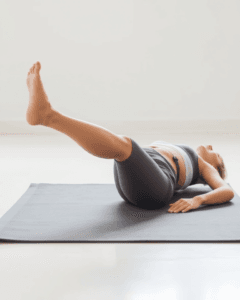In an era obsessed with fitness, it’s easy to get caught up in the latest trends and forget that physical well-being has been a human pursuit for millennia. While modern gyms and high-tech gadgets dominate today’s fitness landscape, cultures around the globe offer valuable insights into achieving a balanced and sustainable approach to exercise. Are we, perhaps, overlooking wisdom from the past and other cultures in our pursuit of the “perfect” workout? Let’s explore some key lessons from different corners of the world.
Lesson 1: It’s Not All About the Gym
In many Western cultures, the gym is the epicenter of fitness, but globally, this is not the norm. An Ipsos survey of 29 countries revealed that people in the Netherlands are the most physically active, averaging over 12 hours of exercise per week. Yet, this activity isn’t confined to gyms. The Dutch prioritize cycling and walking as part of their daily routines, integrating movement into their lifestyles. Similarly, many cultures emphasize activities that blend physical exertion with daily life.
Integrating Activity
- Active Commuting: Walking or cycling to work or for errands is common practice in many European countries, offering a convenient way to be active without carving out extra time.
- Community-Based Exercise: In various parts of the world, group activities like dancing, team sports, or even community gardening serve as a natural way to stay active and social.
- Outdoor Activities: Hiking, swimming and other outdoor activities offer a holistic approach to fitness by connecting with nature.
The lesson here is clear: fitness doesn’t always require a gym. It can be woven into the fabric of everyday life. By focusing on movement that’s functional and enjoyable, we can achieve sustainable fitness that aligns with our routines.
Lesson 2: The Mind-Body Connection Matters
Modern fitness often focuses on physical results like weight loss or muscle gain, sometimes overlooking the importance of mental well-being. However, traditional practices from around the world emphasize the interconnectedness of mind and body.
Ancient Practices
- Yoga (India): A holistic practice combining physical postures (asanas), breathing techniques (pranayama), and meditation. Yoga enhances flexibility, strength, and mental clarity, promoting overall wellness.
- Tai Chi (China): This martial art is characterized by slow, flowing movements and a focus on balance and coordination. It’s practiced for relaxation, stress reduction, and physical health.
- Capoeira (Brazil): This Afro-Brazilian martial art combines elements of acrobatics, dance, and music, providing a full-body workout that also cultivates rhythm and expression.
These practices highlight the importance of mindfulness and movement. They remind us that exercise is not just about physical exertion, but also about cultivating inner peace and mental resilience. Integrating these mind-body disciplines into our fitness routines can lead to a more holistic sense of well-being.
Lesson 3: Sustainability is Key
In recent years, the environmental impact of the fitness industry has come under scrutiny. From energy-intensive gym facilities to the production of synthetic activewear, the fitness world has a significant carbon footprint. However, some cultures promote sustainable approaches to fitness that prioritize the health of both people and the planet.
Eco-Conscious Practices
- Eco-Friendly Gear: Opting for activewear made from recycled materials or organic fabrics reduces the environmental impact of clothing production.
- Reducing Plastic Waste: Using reusable water bottles and containers is a simple yet effective way to minimize plastic waste associated with workouts.
- Green Commuting: Walking, biking, or using public transportation to get to workout locations reduces carbon footprint.
- Home or Outdoor Workouts: Choosing workouts that can be performed at home or in natural environments reduces the need for transportation and gym facilities.
By incorporating sustainable practices, we can align our fitness goals with the broader objective of environmental preservation. Choosing eco-friendly options not only benefits the planet but also encourages a mindful approach to consumption.
Lesson 4: Listen to Your Body – It’s Not “No Pain, No Gain”
The “no pain, no gain” mentality is a pervasive myth that can lead to injury and burnout. While challenging ourselves is important, pushing our bodies to the point of pain can be counterproductive. Traditional fitness philosophies emphasize the importance of listening to our bodies and respecting our limits.
Balanced Approach
- Proper Form: Focusing on the correct techniques helps prevent injuries and promotes effective muscle engagement.
- Rest and Recovery: Adequate rest allows the body to repair and rebuild, preventing overtraining and promoting long-term progress.
- Variety in Workouts: Mixing up workouts helps prevent boredom and plateaus, while also targeting different muscle groups for a more balanced physical development.
- Mindful Exercise: Being in tune with the body allows for adjustments to exercise routines based on individual needs and energy levels.
Rather than pushing through pain, we should prioritize a balanced approach that respects our body’s needs. Fitness is a journey, not a race. By listening to our bodies, we can develop sustainable routines that promote long-term health and well-being.
The Global Takeaway
The global fitness landscape is diverse and rich with traditions that extend far beyond modern gyms. By learning from other cultures, we can re-evaluate our approach to fitness and adopt a more balanced and sustainable philosophy. The key takeaways include:
- Integrate movement into daily life, not just structured workouts.
- Prioritize the mind-body connection by incorporating practices like yoga or tai chi.
- Embrace sustainable practices that benefit both personal health and the planet.
- Listen to your body and avoid the harmful “no pain, no gain” mentality.
Ultimately, fitness should be a journey towards holistic well-being, not just a quest for physical perfection. By embracing lessons from around the world, we can build a healthier, more balanced, and sustainable approach to movement and health.







